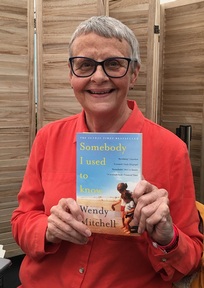Displaying CQC ratings will force care homes to 'up their game'
New guidelines requiring care homes to display how the Care Quality Commission has rated them on their most recent inspection, will force “care homes in some cases to up their game”, according to the top recommended care home in the country.

The guidelines, which came into force from the beginning of April and also apply to GPs and hospitals, mean providers have to display on their website and in waiting areas and communal areas, whether they have been rated as Outstanding, Good, Requires Improvement or Inadequate. Those who fail to display their ratings risk being fined.
David Behan, chief executive of the Care Quality Commission (CQC), claims the new measure will help to achieve “better awareness and greater transparency” for the general public.
Health Secretary Jeremy Hunt said that making ratings more visible will help “people make more informed choices about their care, celebrate success and drive up standards.
“We want to have the safest health and social care system in the world and we know in the wake of Mid Staffs that transparency is vital in helping to improve standards of care. We have made significant changes to become safer and more transparent - this is another important milestone.”
Publically displaying ratings will help families
Heléna Herklots, chief executive at Carers UK, hopes that publically displaying the ratings will help families to “access clear, independent and easy to find information”.
Parveen Goyal, who owns the top two recommended care homes in the country – Breton Court in Kent and Cross Lane House Care Home in East Sussex, is in full support of the measure and believes it will make care homes improve their standards.
“It is a great idea. In years gone by EHO (environmental Health officers) made food establishments display food hygiene ratings as ‘scores on the doors’, this made kitchens raise their standards, and actually did them a favour. The whole ethos of some establishments changed with the customer experience benefitting greatly.
“Relations looking for a care home, have a very daunting task, they have a million questions and fears. By having these scores on the doors at least they will have an immediate expert opinion of the service and a thus greater degree of comfort.”
He adds: “Providers will in some cases have to ‘up their game’, they will hopefully strive to achieve outstanding, and display on their website and entrances with utmost pride. “Looking forward, this can only be a good thing, something I welcome and embrace.”
More trust will come from transparency
Choosing a care home for a relative or friend can be an emotional and testing experience, according to Jonathan Beling, director of Wensley House in Epping,
“Wensley House not only build relationships with our residents, but with their whole family and we know that the basis of any strong relationship is built upon trust, which comes from transparency.
“This is why we are very pleased with CQC’s decision to make inspection ratings more visible this year; this decision will hopefully take a lot of uncertainty out of the decision process for families and help make more informed decisions, which has to be a good thing for all.”
Care England has also welcomed the new guidelines, with Martin Green, its chief executive, saying: “I think that care providers should not only display the CQC rating, but also the action plan that they have developed to improve their performance. They should use this approach as evidence of compliance with their duty of candour."
Des Kelly, executive director of National Care Forum, does have some issues with the guidelines saying he would like to have seen a “more dynamic approach” with different formats required for different audiences, including for example people with learning disabilities, or visual impairments.
“Simply pinning a notice on a wall will not ensure that service users and their relatives have seen and understood what the information means. We believe that a more dynamic approach whereby providers are required to demonstrate that they have fed-back this information to service users would have been much more meaningful and valuable.”
Undermines personalisation and personal freedoms
He is also concerned that displaying the CQC rating could detract from the care home being like a 'home', saying: “A care home is above all someone’s home and personalised, non-institutional approaches should be encouraged by the regulator. This is especially true for smaller group homes where there is very unlikely to be a front office, or reception area, and where the residents themselves have probably chosen their own décor and furnishings. To prescribe to people living in such services what they have to hang on their walls, in our view undermines the principles of personalisation, personal freedoms, choice and control.”
The stipulation that health and social care services display their CQC ratings has not been so well received by GPs. A survey carried out by GP magazine found 42 per cent of GPs opposed the plans to implement the measures, while 39 per cent agreed with the proposals. Responding to the CQC consultation on the issue, the BMA said it had issues with the way general practice was inspected in the CQC's overhauled regime and had ‘serious concerns’ about displaying ratings in practices.
BMA’s head of health policy and economic research Raj Jethwa warned in the CQC consultation on the plan that displaying CQC ratings would be fraught with problems, because ratings are only given once every three years, so two years after the inspection, the service could well have changed for better or for worse.
He is also concerned that displaying poor ratings could create ‘unnecessary anxiety’ among patients or carers who may not be able to change to a different practice and it may damage staff morale.
Care homes should have effective PR strategy in place
Alistair Clay, managing director of Arc Seven, a PR agency which specialises in the social care sector, helping care home providers increase occupancy and build and improve their reputation, warns that care providers will need to “have an effective PR and communications strategy in place to share the good news, but also to explain the less favourable inspection results should they transpire”.
If a facility doesn’t get a desirable rating, it needs to explore how it shares that information in a way that indicates it accepts the findings but is committed to turning things around as swiftly as possible, according to Mr Clay.
He says: “It is possible to limit the damaging effect of ‘bad’ news on reputation. Showing humility, accepting responsibility and a commitment to work tirelessly to fix a problem, all go a long way to showing key stakeholders that the number one concern is the welfare of the residents and the desire to only offer the highest quality care.”
Guidance for care providers on how to display ratings can be viewed at: http://www.cqc.org.uk/content/display-ratings
Latest Features News
 25-Nov-19
2019 Election: Boris Johnson leaves social care in 'too difficult box' but Labour vows to end 'crisis'
25-Nov-19
2019 Election: Boris Johnson leaves social care in 'too difficult box' but Labour vows to end 'crisis'
 18-Oct-19
Podcast: Wendy Mitchell and dementia: 'My biggest fear is not knowing who my daughters are'
18-Oct-19
Podcast: Wendy Mitchell and dementia: 'My biggest fear is not knowing who my daughters are'
 27-Sep-19
Exclusive: Care minister backs care workers' call for time off to grieve and attend funerals
27-Sep-19
Exclusive: Care minister backs care workers' call for time off to grieve and attend funerals
 19-Sep-19
Podcast: Gyles Brandreth says poetry helps ward off dementia
19-Sep-19
Podcast: Gyles Brandreth says poetry helps ward off dementia
 30-Aug-19
Edinburgh Fringe funnyman joins comics facing toughest audience at care home gig
30-Aug-19
Edinburgh Fringe funnyman joins comics facing toughest audience at care home gig